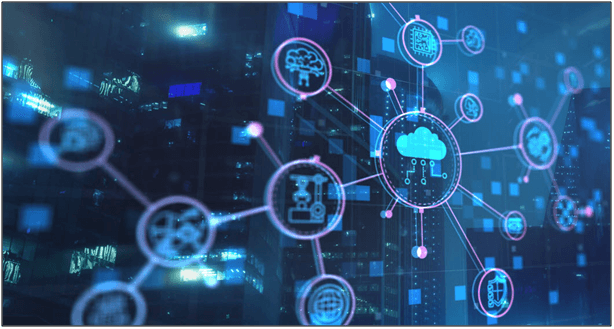Greenhouse gas emissions and global warming are serious issues, and governments worldwide have already set targets to tackle them in the form of regulations. Thus, businesses are forced to embrace sustainability principles. Furthermore, studies have revealed that its supply chains contribute about 80% of the CO2 emissions for a consumer company. Therefore, developing a green supply chain is imperative. However, there are many other obstacles that an organization that wants to implement sustainable supply chains needs to overcome. This article discusses the most critical challenges and their possible solutions.

Table of Contents
Complexity in Supply Chains
It is impossible for any business to work by itself, and dependency on each other is inevitable for proper business functioning. The visibility of vendors’ performance is one of the most significant issues in ensuring green supply chains. For instance, a multinational company may have thousands of first, second, and third-tier suppliers, and it is not easy to control their mode of operations. Realizing transparency in every stage of a company’s supply chain network is complex. For most of the companies, their lowest-level suppliers are from undeveloped countries where the governments are not enforcing sustainability initiatives, and they are only driven by cost. Identifying such suppliers and correcting their processes or replacing them with green suppliers will consume time, and that action can often cause supply chain disruptions. This challenge can be overcome by establishing a solid partnership with all the suppliers. A good partnership will help to create a responsible supplier who works tirelessly to meet their client’s requirements. Hence, each supplier in the chain will help ensure their upstream suppliers follow green philosophy in their process, starting from sourcing till delivery. Invisible supply chains are always an issue, and sophisticated software is essential to monitor them. Thanks to new technologies such as Artificial Intelligence and Machine Learning which helped develop supplier performance management software to improve supply chain visibility. Concentric Supplier Risk Management Software is an example of such kind.

Prohibitive Costs for Sustainability
Sustainable supply chains require more resources to develop new standards and strategies. Therefore, it will trigger an excessive initial investment for the companies. Supply chain leaders often have sandwiched between the cost and sustainability requirements set by the regulatory boards or customers. As a result, they experience tremendous pressure from the massive cost incurred. The expenses caused by hiring sustainability specialists to advise and implement green systems, potential non-compliances, monitoring new supply chain metrics, evaluating suppliers’ compliance, etc., are examples of such extra costs. A survey performed by the Economic Intelligence Unit and LLamasoft revealed that 38 percent of the companies believe that the higher initial cost remains a big barrier to adopting sustainability. However, the same survey also unveiled that about 34 percent of the participant companies think the sustainable supply chain will eventually reduce the cost and achieve their breakeven in the near future. A significant capital investment is indeed needed to implement sustainable supply chains. Nevertheless, considering the current trend, studies have shown that the cost of ignorance of sustainability in supply chains by the year 2026 will be around $120 billion. Some industries have already started practicing supply chain mapping to make sure the green commitment is being followed by the entire supply network. It implies that sustainability will be the main driving factor in the future, and embracing it as early as possible will help a business reserve its market share. Companies adopting it will avoid risking brand value and phasing out from the business. In short, the earlier the investment a company can make, the better its profit is going to be.
Lack of an Established Sustainable Framework
Sustainability in supply chains is a relatively new philosophy, and governments across the globe are striving to achieve sustainability in everything to save the planet. Various countries are implementing regulations on the risks associated with environmental, social, and governance (ESG). These regulations are pretty fluid and are subject to changes. Hence, companies worldwide are racing behind the newly formed ESG regulations to tailor their sustainable supply chain policies. It is vital for any organization that operates in the global market to build a supply chain framework that meets local requirements. The dynamic nature of the ESG policies of different countries paves a difficult path for companies to establish a well-defined sustainable supply chain framework. Strong management with a clear vision is essential for any organization to develop a robust, sustainable supply chain framework. They must be willing to embrace changes at any point in time. This can only be realized with solid support from the government.

Inadequate Resources for Implementation
Cost, quality, and lead time were the key pillars that drove traditional supply chains. But, increased concern about climatic change and global warming forced everyone to rethink it. That is how the idea of a green supply chain has evolved. Undoubtfully, once a sustainable supply chain is implemented, it will add indefinite value to the business while keeping the negative impact on the planet at a minimum. Nonetheless, the implementation process will be arduous due to the absence of proper resources. The unavailability of solid strategies, lack of human resources experienced in sustainability methodology, etc., are some excellent examples that could contribute to this situation. On the other hand, the problems with inadequate resources are just momentarily, and they will be resolved over time. A talented pool of people is being moulded in the field of supply chain sustainability through real-life challenges as well as academic qualifications. Hence, businesses have to invest in people development by giving them appropriate training and opportunities to build their future workforce in the field of sustainability. Governments across the world understand this requirement, and thus they support organizations by giving them training grants or incentives.

Non-Availability of Suitable Technologies
The green supply chain is a field that takes a lot of traction around the world. Switching from a traditional supply chain to a green supply chain is not easy, as the word suggests, since it requires a radical change in an organization’s mode of operation. Adopting sustainable philosophy in the supply chain will make a company to re-look into its existing technologies and software to incorporate sustainability principles. Companies embrace various technologies nowadays, such as the Internet of Things (IoT), artificial intelligence (AI), big data analytics, blockchain, demand forecasting algorithms,3D printing, and cloud computing. However, the unavailability of properly defined technologies is a challenge for any business that wants to venture into this field. Considering the dynamic nature of sustainability regulations and requirements, companies learn from real-life challenges, and their systems are susceptible to changes. The fluidity in requirements adversely affects how software is being developed to serve the field. Despite the difficulties in deploying innovative technologies in the area, many companies have already successfully implemented them. Walmart in the U.S. is one of the best examples. They use sensor-controlled drones to detect agricultural-related problems at the early stage itself, which enables them to better prepare to mitigate the risk in their food supply chain.

Human Factors for Sustainability Adoption
Another critical challenge is the resistance from the people. It is a common human instinct to exhibit resistance to adopting something unfamiliar to them. Embracing sustainability means the complete change in process or procedure that they are familiar with. That implies they have to start everything from the beginning, and due to that fact, most people feel insecure about risking the experience that they have earned over years of hard work. Sustainability is no longer an option; instead, it is becoming a requirement that every business needs to be followed in the future to be relevant in the market. Hence, companies must handle these psychological issues very seriously before getting too late. Providing adequate training to the relevant employees is a critical step to overcoming this hurdle. On top of that, the management team must work with their employees to understand their requirements and concerns. This activity will help the management team to design an effective training program and sustainability rolling out plan that best suit their organization. Cultivating a mindset and fostering a culture of sustainability within an organization is crucial in preparing the organization for the future.
Aligning the Conflicting Objectives
For a company or a brand to be switched to sustainability completely, it has to ensure that the entire supply chain is adhering to the green philosophy. For most of the scenarios, suppliers, especially low-tier suppliers, operate in 3rd world countries where sustainability is not a prime concern and the cost and lead time drive them. That situation creates a conflict of interest between the suppliers and the brand they are catering to. This alignment issue must be identified by analyzing every supplier in the network to make sure they are complying. If the alignment is impossible, sourcing for alternative green suppliers is needed. There are online platforms and consulting firms available in the market to assist businesses in this matter. Bomler is an example of such a platform.
Conclusion
Integrating sustainability in supply chains is vital to save the planet and keep the business relevant in the future market. Identifying the challenges that hinder the implementation process is essential to mitigate its adverse effects and to ensure its successful execution. Earlier detection of the risks will equip an organization to better prepare itself with the right weapons in the arsenal. The correct vision and planning will lead a company on the right path towards sustainability, giving them an upper hand in business compared to its competition.
References
Bomler. (2022). 3 Challenges of Sustainable Supply Chain Management [and How to Solve Them]. Supply Chain, Sustainable Business. Available at https://www.bomler.com/blog/3-challenges-of-sustainable-supply-chain-management-and-how-to-solve-them. (Accessed: 26 November 2022).
LLamasoft. (2019). Cost is the Biggest Challenge for Sustainable Supply Chains. SDC. Available at https://www.sdcexec.com/sustainability/news/21044147/llamasoft-a-coupa-company-cost-is-the-biggest-challenge-for-sustainable-supply-chains. (Accessed: 24 November 2022).
Noor Rasidah. (2022). Key Strategies for a Sustainable Supply Chain. SIPMM Publications. Available at SIPMM: https://publication.sipmm.edu.sg/key-strategies-sustainable-supply-chain/. (Accessed: 23 November 2022).
Shute, B. (2022). 3 Green Supply Chain Management Challenges & Their Solutions. Comprara. Available at https://comprara.com.au/3-green-supply-chain-management-challenges-their-solutions/. (Accessed: 24 November 2022).
StudyCorgi. (2020). Green Supply Chain Advantages and Challenges. StudyCorgi. Available at https://studycorgi.com/green-supply-chain-advantages-and-challenges/. (Accessed: 26 November 2022).
Sunil Gunwani. (2021). Best Practices for Building Sustainable Supply Chains. SIPMM Publications. Available at SIPMM: https://publication.sipmm.edu.sg/best-practices-building-sustainable-supply-chains/. (Accessed: 24 November 2022).
Tan Fei Ni. (2022). Strategic Criteria for Healthcare Sustainable Practices. SIPMM Publications. Available at SIPMM: https://publication.sipmm.edu.sg/strategic-criteria-healthcare-sustainable-practices/. (Accessed: 25 November 2022).
Trax Technologies. (2022). 5 Key Challenges to Building a Supply Chain with Environmental Sustainability in Mind. Trax. Available at https://www.traxtech.com/blog/5-key-challenges-to-building-a-supply-chain-with-environmental-sustainability-in-mind. (Accessed: 23 November 2022).

